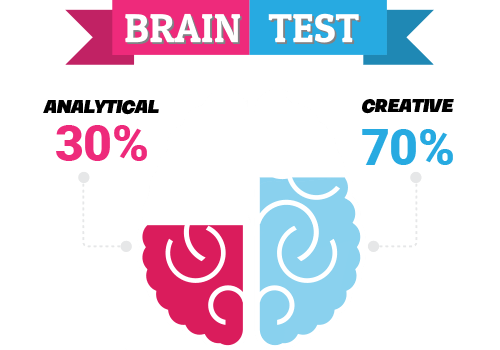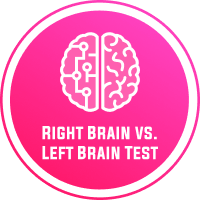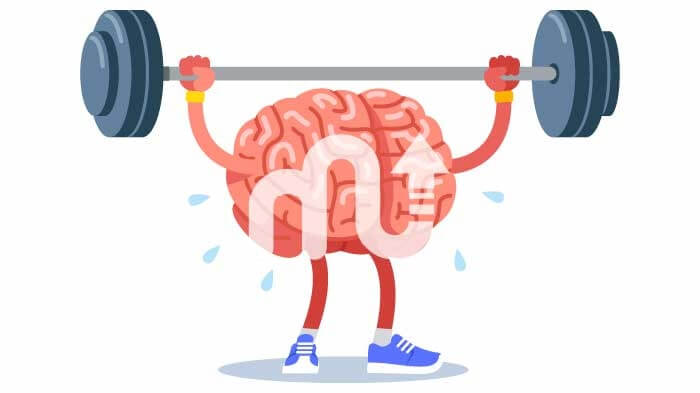You've probably heard the theory about people being categorized as right-brained or left-brained, with distinct personality traits attributed to the dominant hemisphere of their brain. This brings us to the concept of the left brain vs. right brain.
In this guide, we'll address all the questions you have about right-brain vs. left-brain thinking and offer some tips to keep your mind balanced and engaged!
How the Brain Works?
To understand the theory of the right vs. left brain, let's focus on how our brain works first. The brain serves as the central control center for our nervous system, overseeing our thoughts, emotions, sensations, and actions. It is made up of billions of nerve cells called neurons that communicate with each other through chemical and electrical signals.
The brain comprises three main parts: the cerebrum, the cerebellum, and the brainstem, each with different functions. While the cerebellum and brainstem control autonomic functions like breathing, the cerebrum interprets information from the senses and regulates emotions, reasoning, and learning.
Theory of Right Brain vs. Left Brain Dominance
As we mentioned earlier, the cerebrum is one of the main parts of the brain. It is also the largest part of the human brain, consisting of the left and right hemispheres.
In the 1960s, Nobel Prize-winning neuroscientist Roger W. Sperry put forward a theory that suggests each hemisphere of the brain has different functions and abilities, and people tend to utilize one type of thinking over the other.
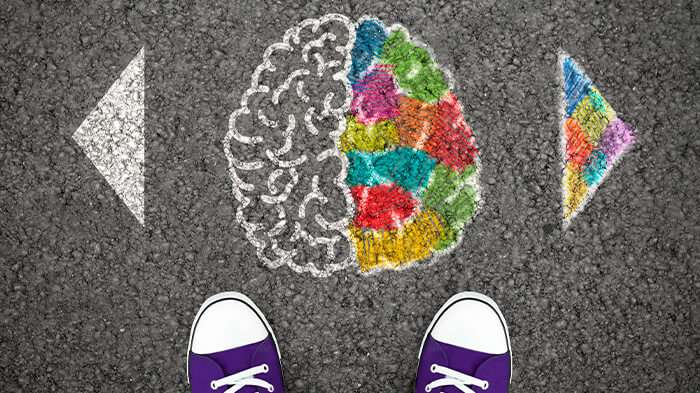
According to the "left brain vs. right brain thinkers theory," the left brain is more logical, analytical, and objective, while the right brain is more creative, intuitive, and subjective.
Left Brain vs. Right Brain: Hemisphere Function
Now that we've learned about the left brain vs. right brain psychology theory, let's explore the differences between the right brain and the left brain, as well as delve into the detailed functioning of these hemispheres.
Functions and Characteristics of the Left Brain
According to the theory of right brain vs. left brain thinkers, the left side of the brain is associated with mathematical and logical thinking skills, making left thinkers more logical, analytical, and orderly. Some of the key functions and characteristics of the left brain include:
- Processing linguistic elements such as words, grammar, and syntax.
- Verbal memory and memorization skills.
- Reasoning, problem-solving, and critical thinking.
- Demonstrating organization, structure, and attention to detail.
- Expressing thoughts verbally and thinking in words.
Functions and Characteristics of the Right Brain
The left-brain vs. right-brain concept suggests that the right side of the brain excels in functions related to expressive and creative tasks. So, right thinkers are more inclined toward being emotional, intuitive, and creative. The right brain encompasses functions and characteristics such as:
- Imagination, visualization, and artistic expression.
- Divergent thinking and generating novel ideas.
- Sensing, feeling, and holistic thinking.
- Adaptability, spontaneity, and risk-taking.
- Thinking in images rather than words.
What Is the Difference Between Right-Brain and Left-Brain Thinking?
As you can understand from the right brain vs. left brain characteristics, the main difference between right and left thinking is that right thinking is more creative, while left thinking is more logical.
Consider two people with very different ways of thinking as an example. One of them is John, who is a left-brain thinker. He likes to follow rules, plan, and analyze everything. He is good at math, science, and languages. He prefers facts over feelings and logic over intuition. He is neat, organized, and punctual.

The other person is Lisa, who is a right-brain thinker. She likes to explore, improvise, and create. She is good at art, music, and understanding emotions. She prefers feelings over facts and intuition over logic. She is spontaneous and flexible.
Moreover, there are some differences in the careers these people might find success in. For example, while Lisa could be a successful artist, psychologist, or writer, John might excel as an accountant, scientist, or computer programmer.
Tips and Exercises to Keep Your Brain Sharp
Until now, we have evaluated left or right-brain dominance. Whether you are a right or left-brain thinker, it is important to keep your mind active and engaged. Here are some insightful tips for people of all ages to nurture their minds.
1. Play MentalUP Brain Balancing Games
MentalUP is the ultimate app for a wide array of right-brain & left-brain games! This brain games app is designed by academicians, and game developers to provide an effective learning platform for kids and adults.
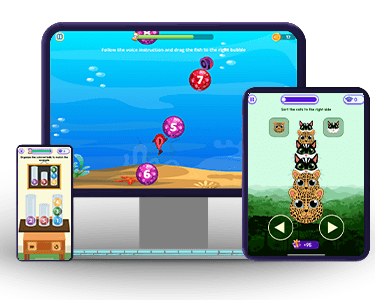
Through its adaptive algorithms, MentalUP continuously assesses users' skills and development. These plans include brain games and activities tailored to their age, level, and skills.
Furthermore, the app does not contain any inappropriate content or ads, making it one of the finest learning resources available for all family members to enjoy. This could explain why it has been recognized as one of the best family-friendly products by U.S. Teachers and Moms!
Discover MentalUP and unlock a bundle of joy with a plethora of right-brain & left-brain activities for students and adults alike! 🧠✨
Featuring puzzles, memory games, visual intelligence, concentration, logic, and more, MentalUP presents an array of brain balancing exercises. The app is also equipped with strong performance-tracking and reporting modules, enabling parents to monitor not only their progress but also their kids'. 🧩🥇📊
Download the award-winning app right now to access 1000+ brain games and unleash the true potential of every member of your family! 👨👩👧👦👏
2. Learn a New Language
If you are looking for right-brain & left-brain exercises suitable for individuals of all ages, you can consider learning a new language. This process engages various cognitive processes such as memory, attention, and problem-solving, enabling the brain to create new neural pathways, enhance its plasticity, and improve adaptability.

You can take language classes, try language learning apps, or engage in conversations with native speakers. These language learning practices will stimulate both hemispheres of your brain, as the left hemisphere processes language and the right hemisphere plays a role in understanding nuances.
3. Eat Brain-Boosting Foods
Whether you lean towards right-brain or left-brain thinking, ensuring proper nutrition is essential for maintaining optimal brain health. Certain foods, abundant in antioxidants, healthy fats, and minerals, not only support cognitive function but also shield brain cells from damage.

Moreover, Omega-3 fatty acids found in fish are known to enhance memory and promote overall brain health. Therefore, ensure that all your family members adhere to a healthy and balanced diet that incorporates various food groups, including fruits, vegetables, proteins, and grains.
4. Get Sufficient Sleep
During deep sleep, the brain processes information gathered throughout the day, forming connections between neurons that enhance problem-solving skills. So, is a proper sleep routine good for the right side brain vs. left side brain? Well, it boosts the collaboration between these two hemispheres.

Both parents and kids can aim for 7-9 hours of quality sleep each night. To prepare the mind for sleep, try to keep your sleep environment comfortable and dark, avoid screens before sleep, and limit caffeine intake in the afternoon and evening. Also, make sure that your kids spend their excess energy.
5. Practice Mindfulness Exercises
Whether you are right-brain or left-brain dominant, you'll enjoy the relaxation that mindfulness exercises provide. Regular mindfulness exercises like yoga, meditation, and deep breathing, not only reduce stress but also enhance the connections between brain regions responsible for attention and emotional regulation.

To establish a mindfulness routine, you can allocate a specific amount of time each day to mindfulness exercises or turn it into a daily activity you engage in with your family members. Remember to always begin with a few minutes of deep breathing or guided meditation, gradually increasing the duration as you become more comfortable.
6. Stay Curious
In the pursuit of mental vitality, curiosity can be your guiding force, urging you to embrace the unknown and remain engaged with our ever-evolving world. Maintaining curiosity involves actively seeking opportunities to acquire new knowledge, skills, and perspectives throughout our lives.

There are numerous avenues to nurture your curiosity. You can explore new hobbies, enroll in online courses, or read diverse books to keep your mind agile and adaptable. If you want to foster curiosity in your children, encourage them to ask questions about the world around them.
7. Stay Physically Active
Regular exercise increases blood flow to the brain, delivering essential nutrients and oxygen that support cognitive functions. It also stimulates the release of neurotransmitters like dopamine and serotonin.

For adults, it's recommended to strive for a minimum of 150 minutes of moderate-intensity aerobic activity per week. Similarly, children should aim for at least one hour of daily physical activity, incorporating a mix of aerobic exercises, muscle-strengthening activities, and bone-strengthening exercises like jumping.
8. Travel to New Places
Traveling promotes cognitive flexibility by exposing individuals to new situations and cultures. This exposure to unfamiliar environments encourages problem-solving, learning, and adaptability, enhancing cognitive resilience.

Travel often requires venturing beyond one's comfort zone, fostering increased self-confidence and personal growth. So, meeting new people and delving into local histories can be one of the best ways for all your family members to keep their minds sharp.
9. Build Strong Social Connections
Engaging in meaningful social interactions provides numerous opportunities for mental development in both children and adults, whether they predominantly use right-brain vs. left-brain thinking. It offers mental stimulation, emotional support, and chances for novel experiences.

If you want to cultivate deeper connections with people and become more socially engaged, consider joining clubs, attending social events, and participating in group activities that align with your interests. Remember to engage in conversations and actively listen during these occasions to strengthen your social bonds.
Frequently Asked Questions About Right Brain vs. Left Brain
If you still have questions about the right side of the brain vs. left side of the brain theory, here are the most commonly asked questions about the topic, along with their answers.
How do the right brain and left brain work together?
The right and left brain hemispheres collaborate to manage various cognitive functions, with the left often handling logic and language while the right excels in creativity and spatial awareness.
What does the right side of the brain control?
The right side of the brain primarily controls spatial perception, artistic creativity, and recognizing emotions in others.
What does the left side of the brain control?
The left side of the brain is responsible for language processing, logical reasoning, and analytical thinking.
What is the history of right brain vs. left brain theory?
The right brain vs. left brain theory originated from research in the 1960s and suggested that the two hemispheres of the brain are responsible for different functions.
What is the smarter side of the brain?
Intelligence involves the coordinated activity of both hemispheres, so it is not right to say that there is a smarter side of the brain.
Is left-brain intelligent or right-brain?
Both the left and right hemispheres contribute to intelligence, with different strengths in various individuals.
What is a left-brained person like?
A left-brained person is often seen as analytical, logical, and detail-oriented.
What is a right-brained person like?
A right-brained person is often viewed as creative, intuitive, and emotionally expressive.
How do you know if you're left brained or right brained?
You can consider if you tend to think analytical (left brain) or intuitive (right brain) to find the answer, or for a more detailed and spot-on result, you take the MentalUP Right Brain vs Left Brain test.


